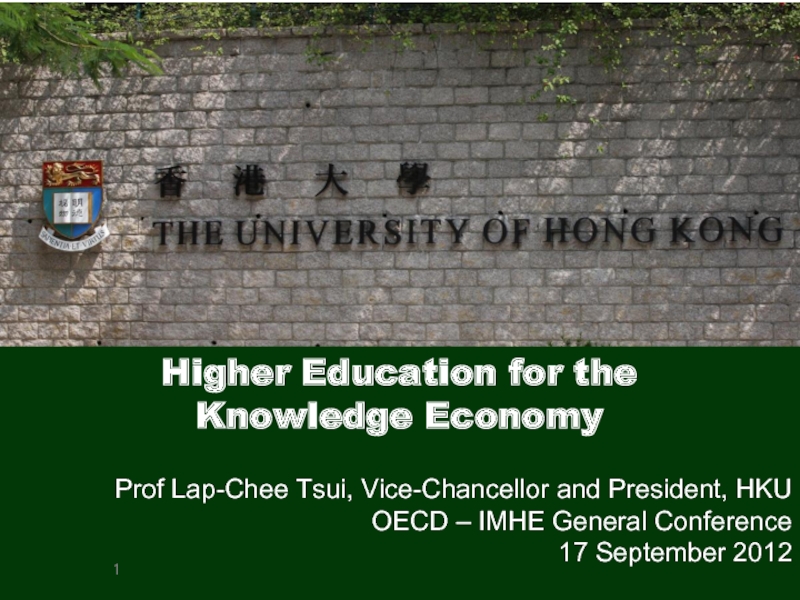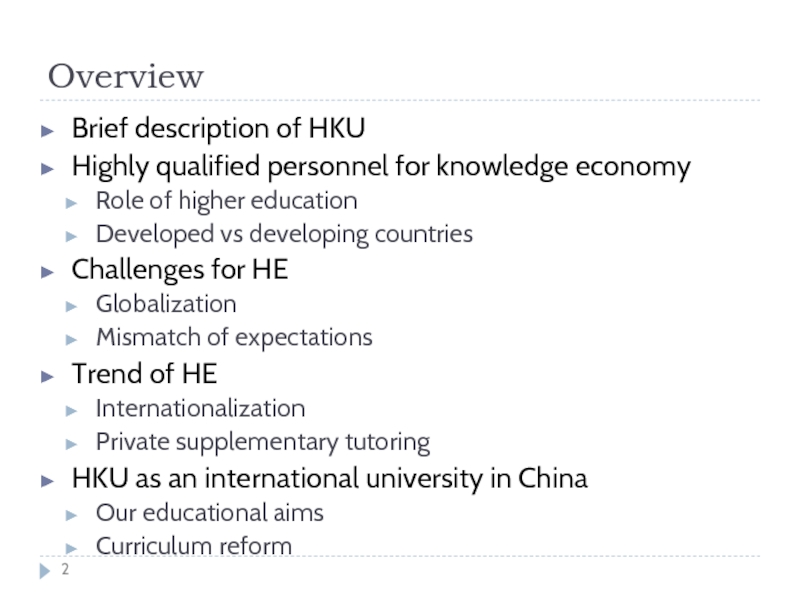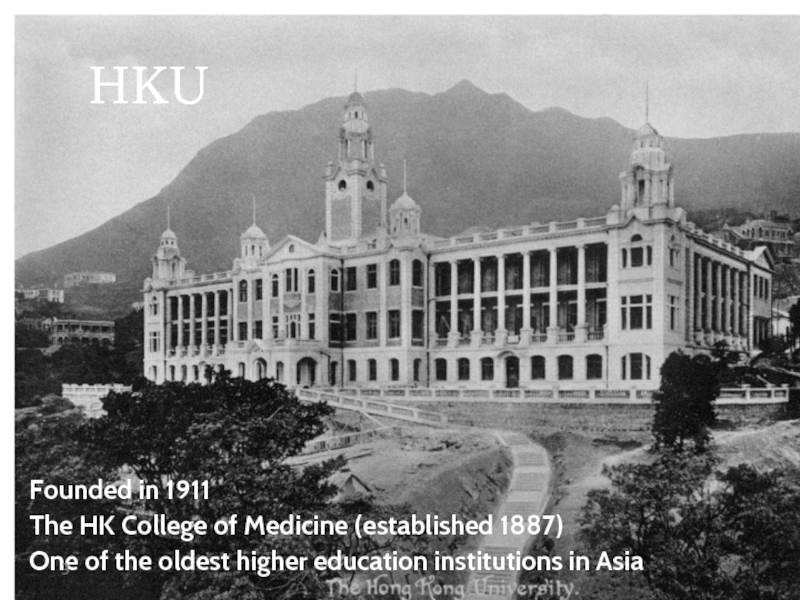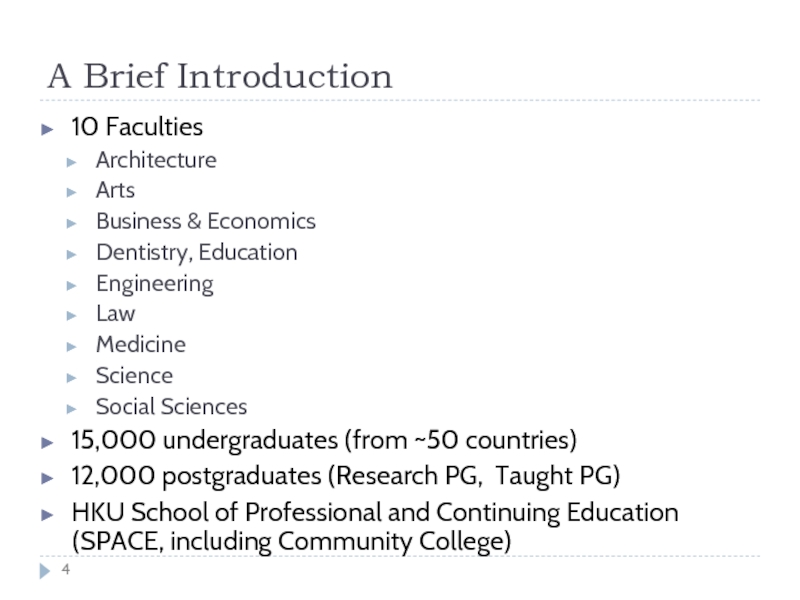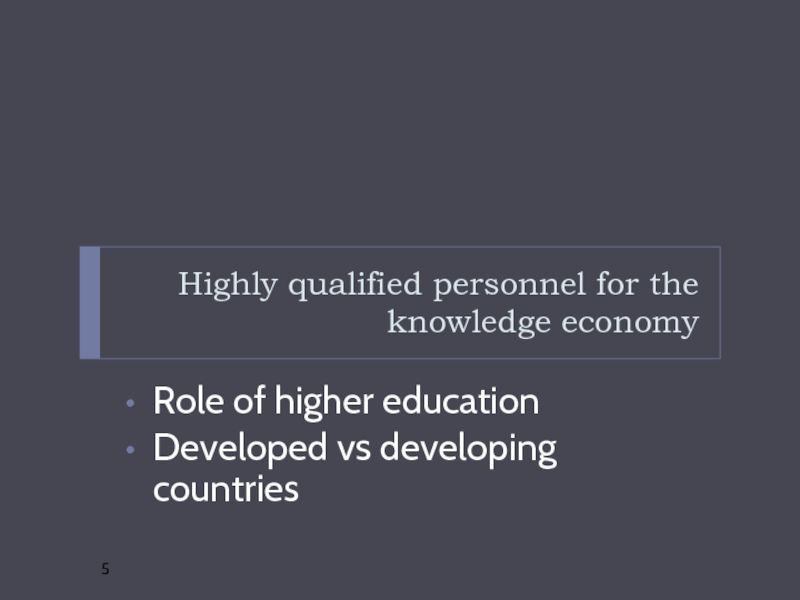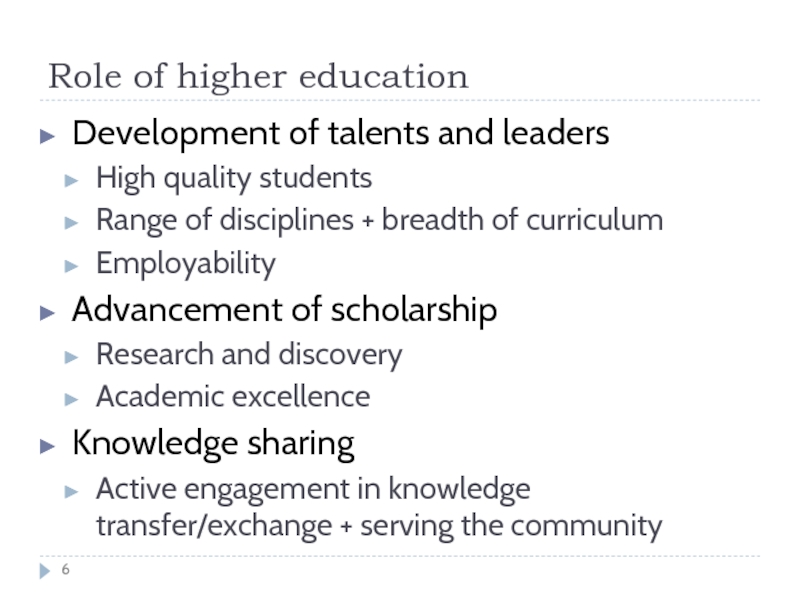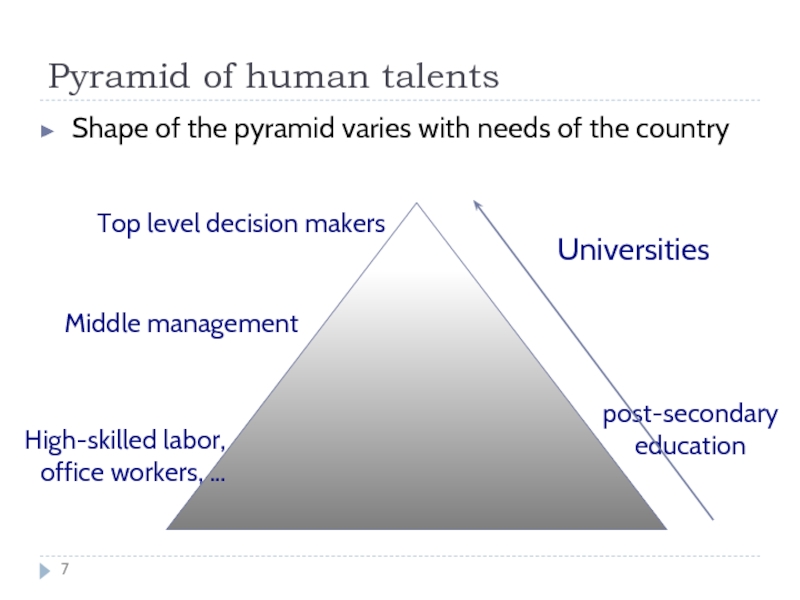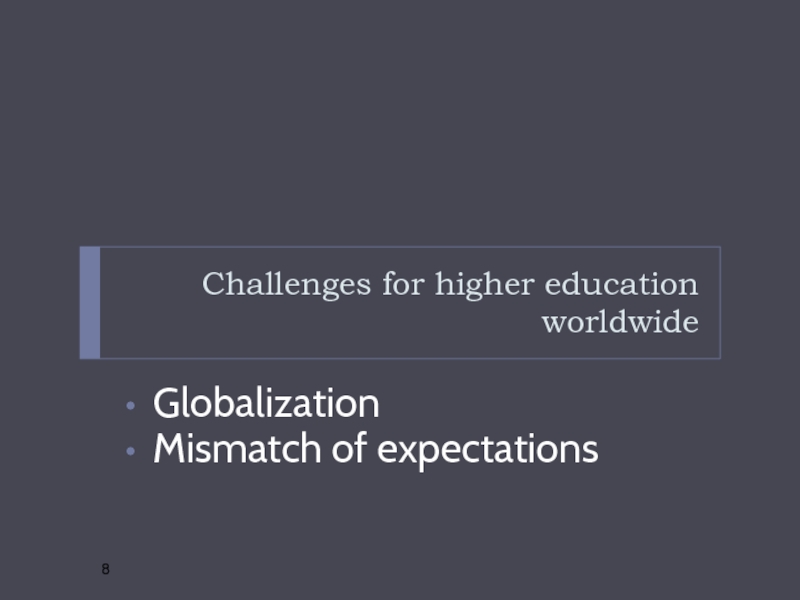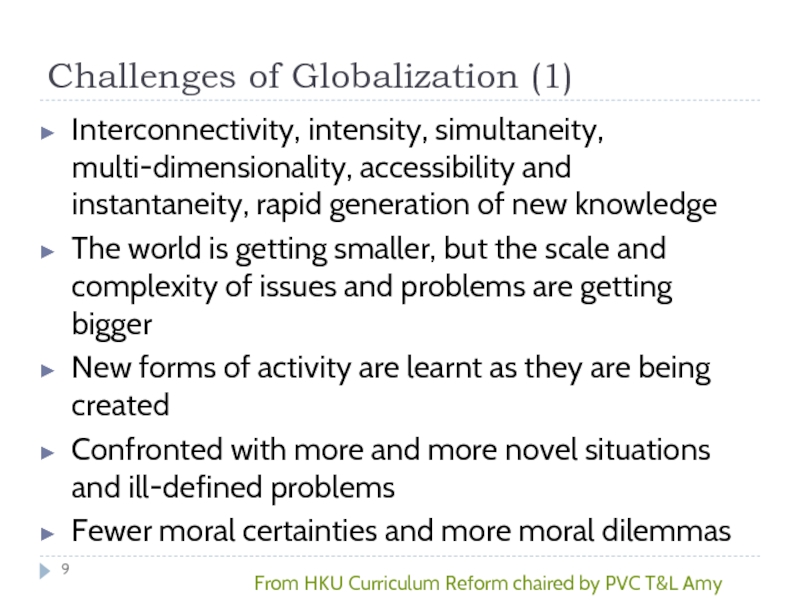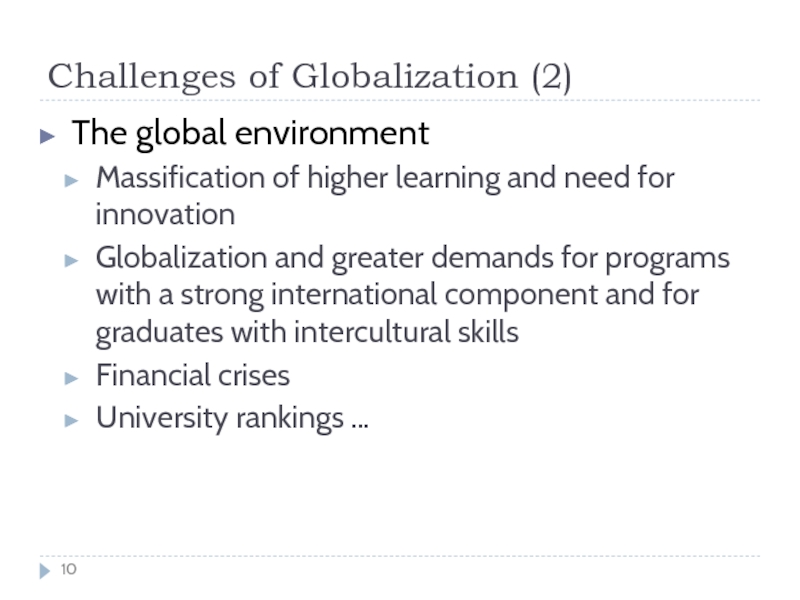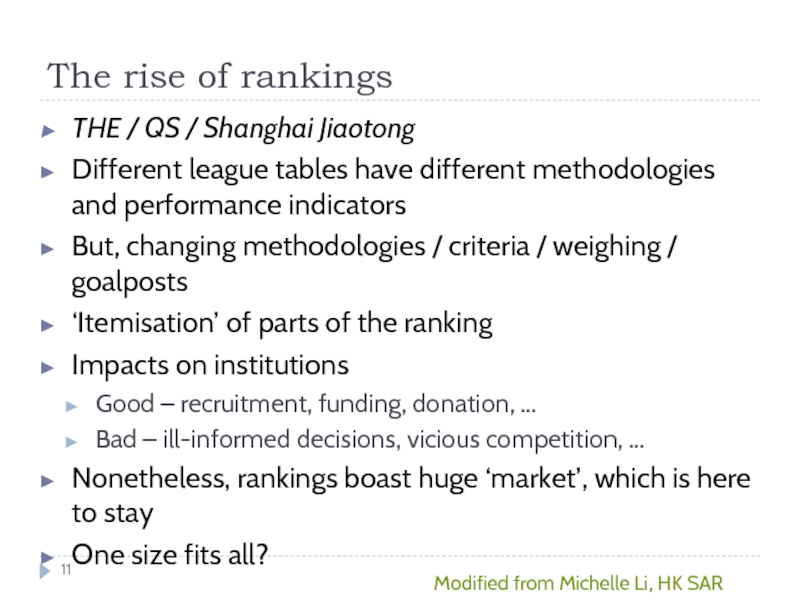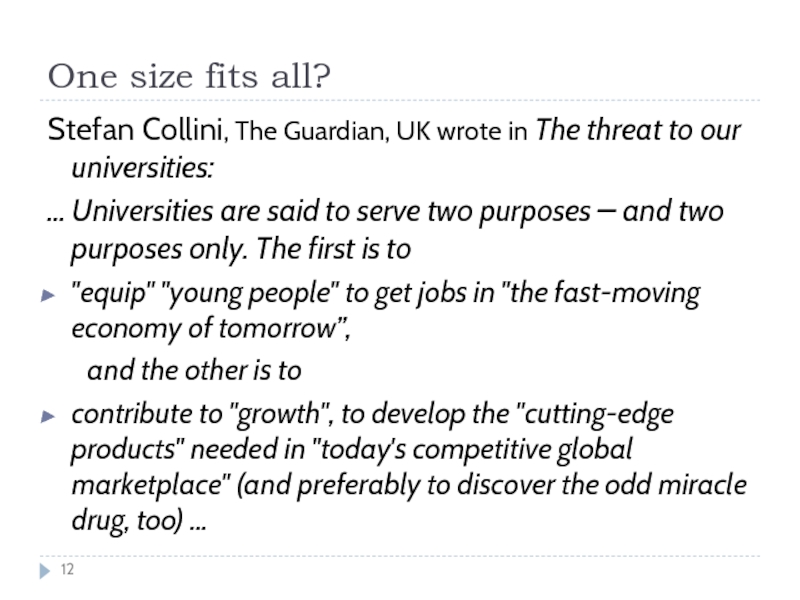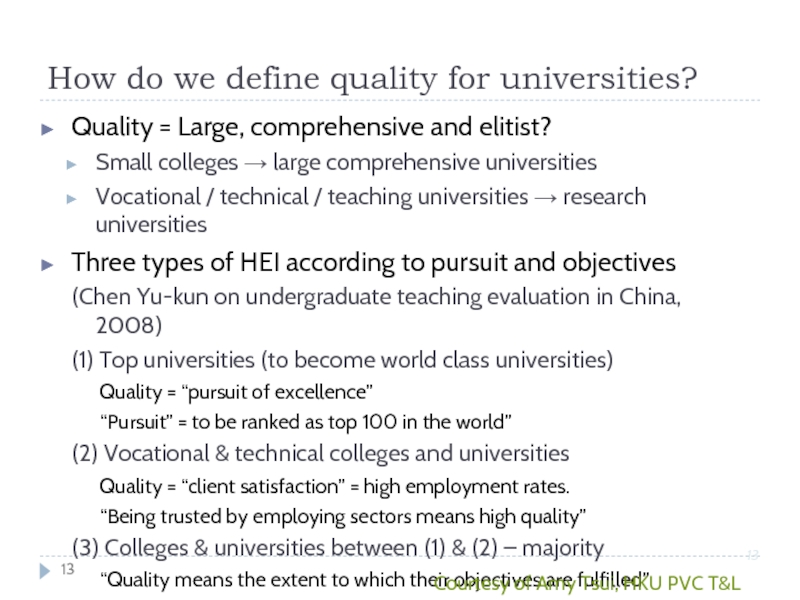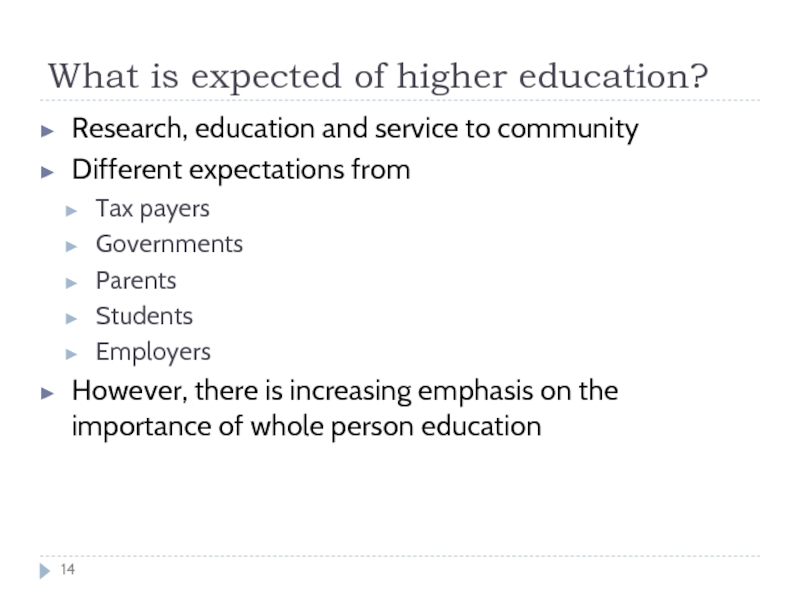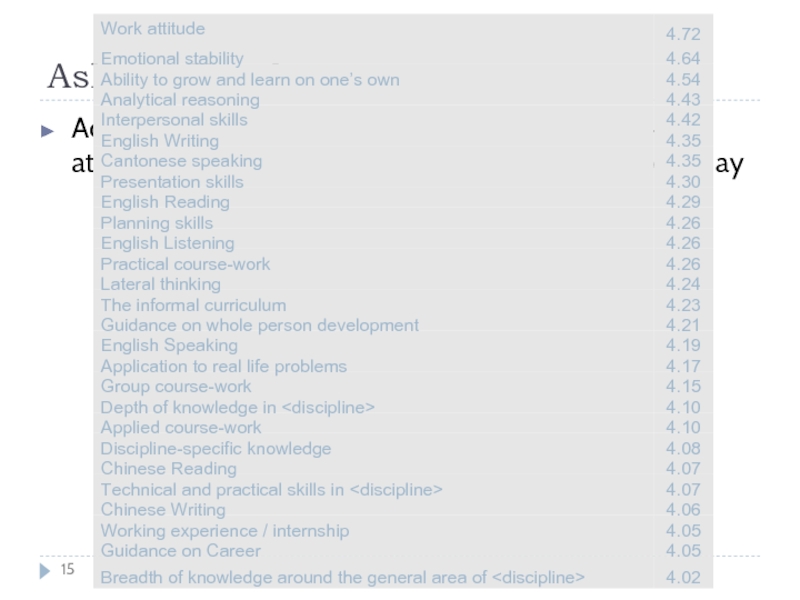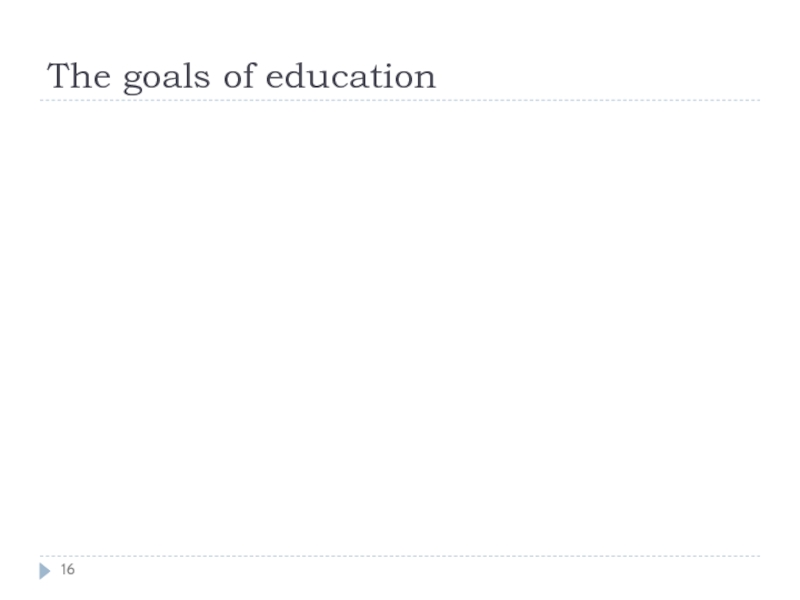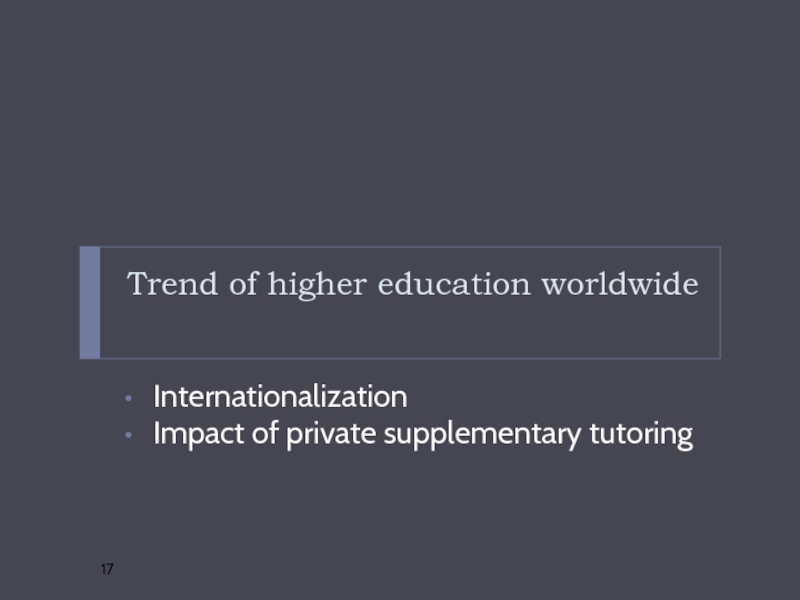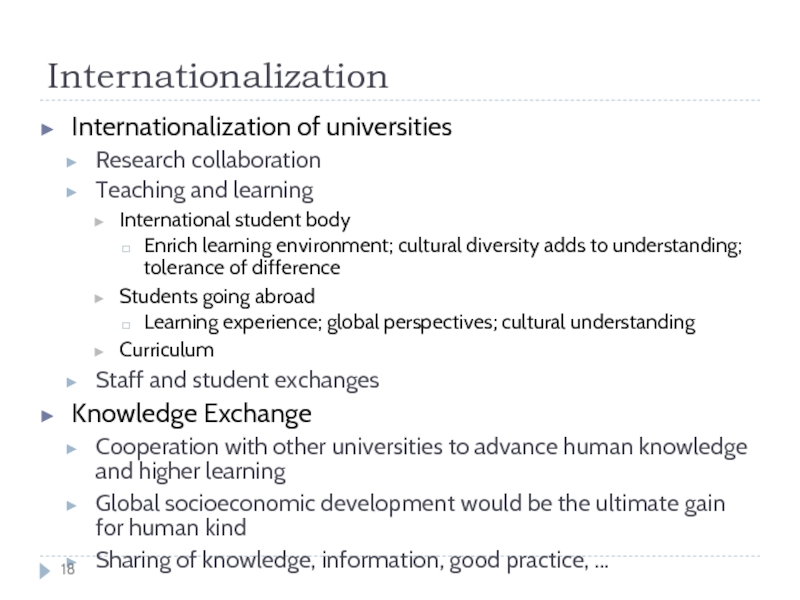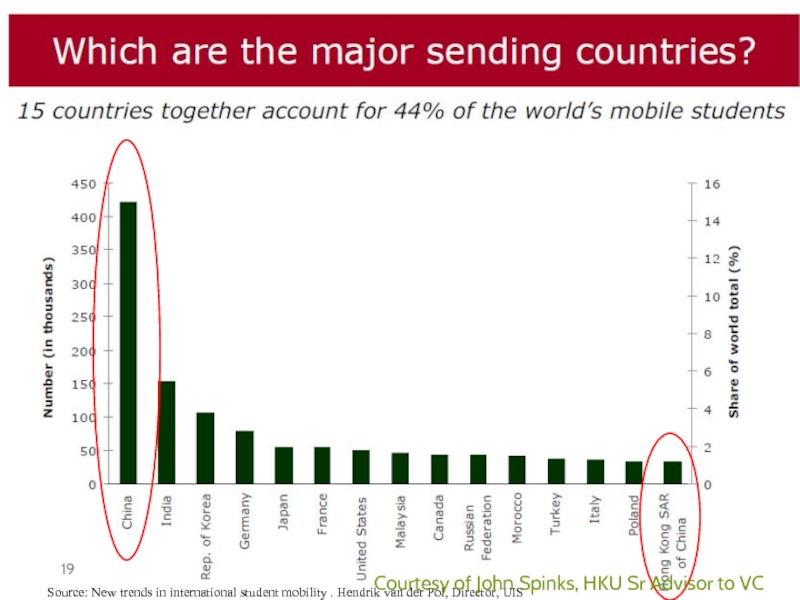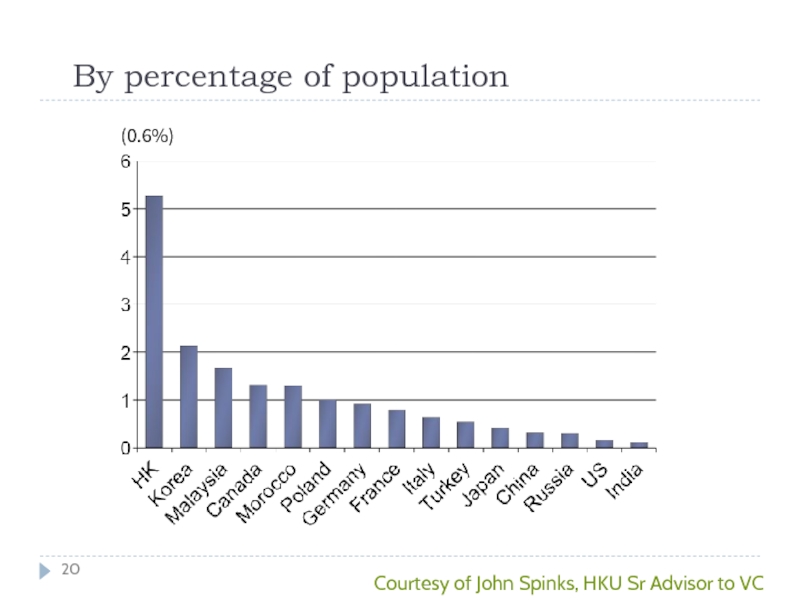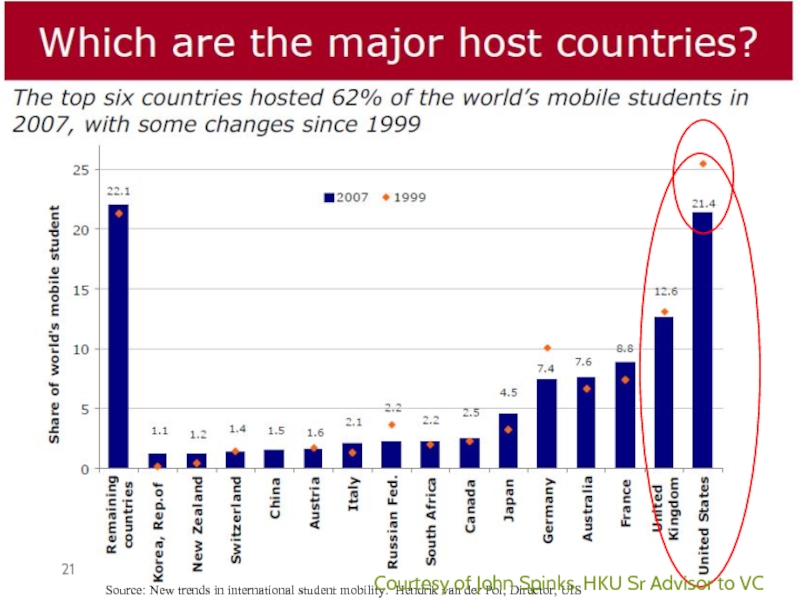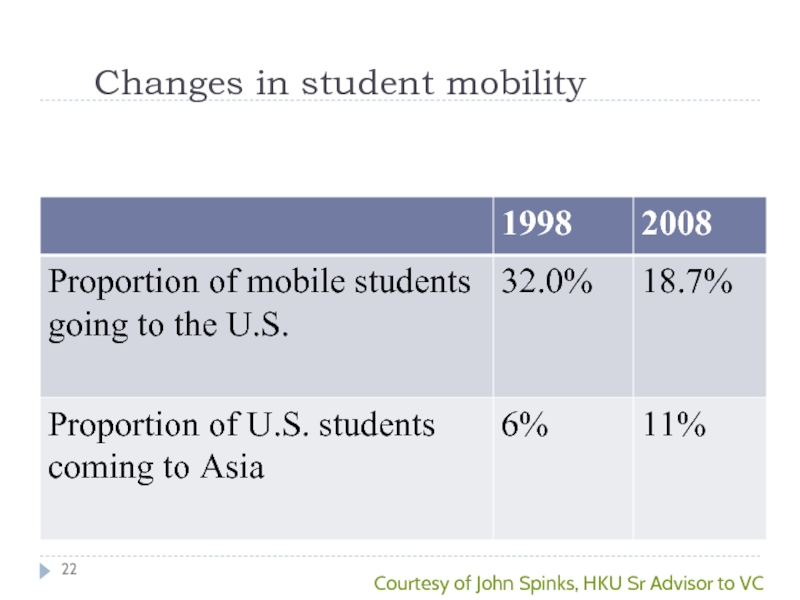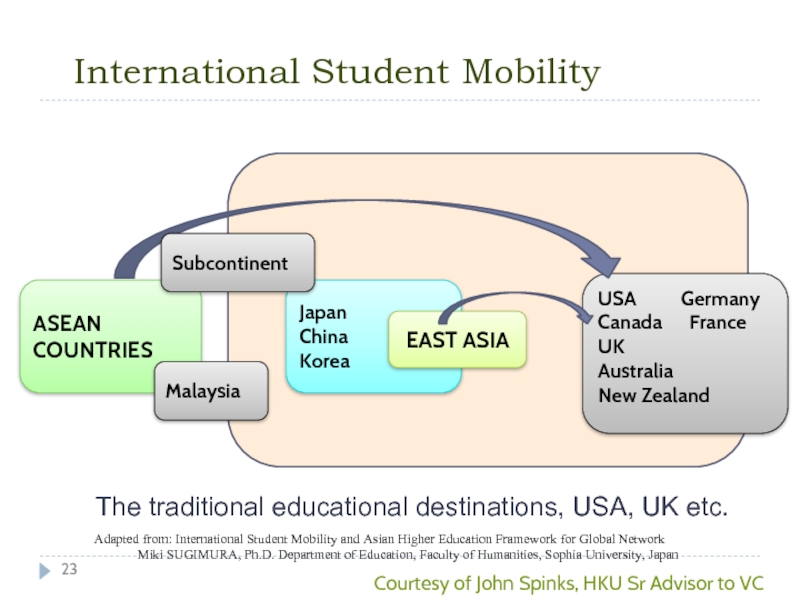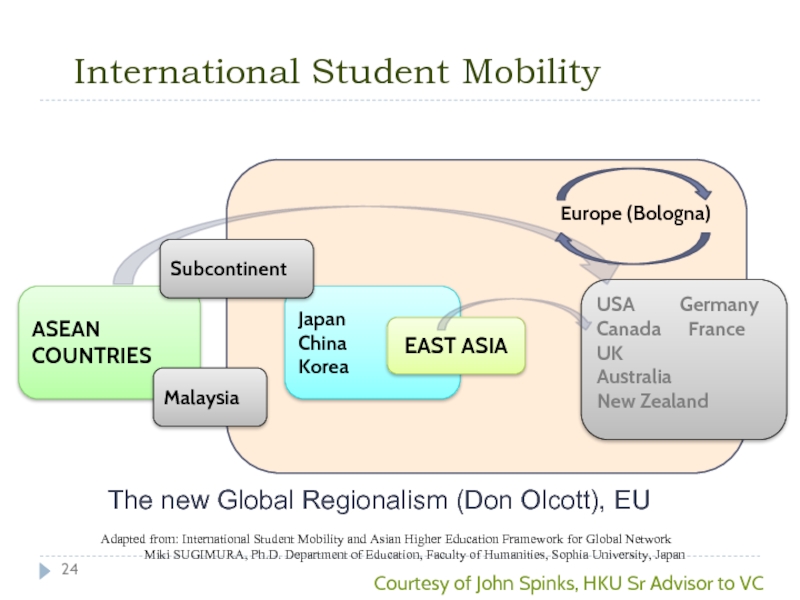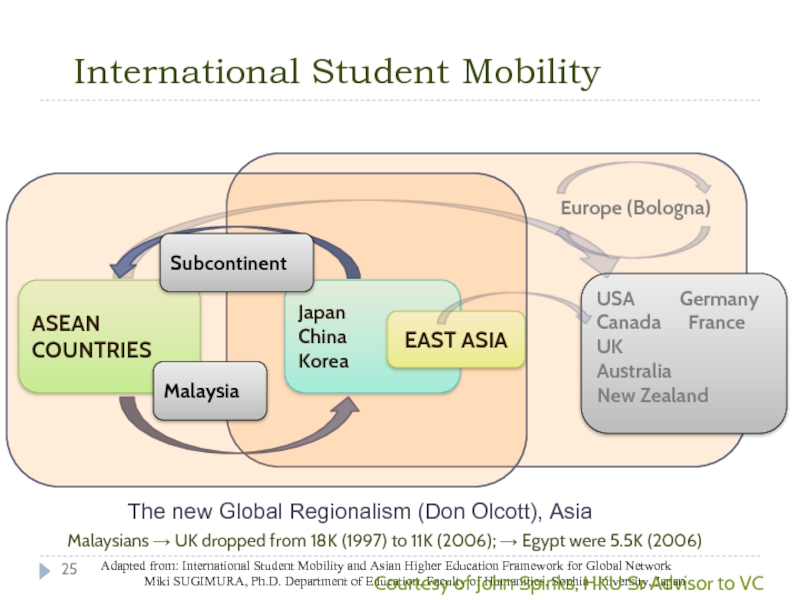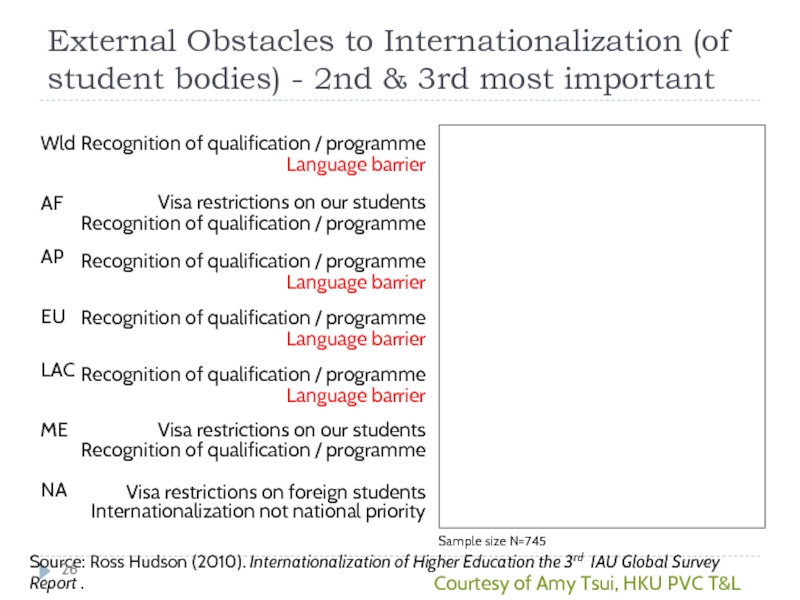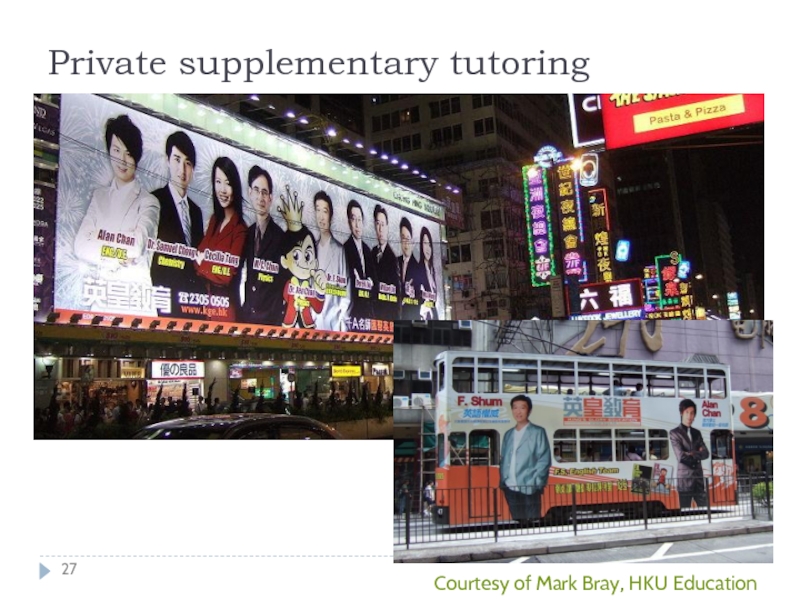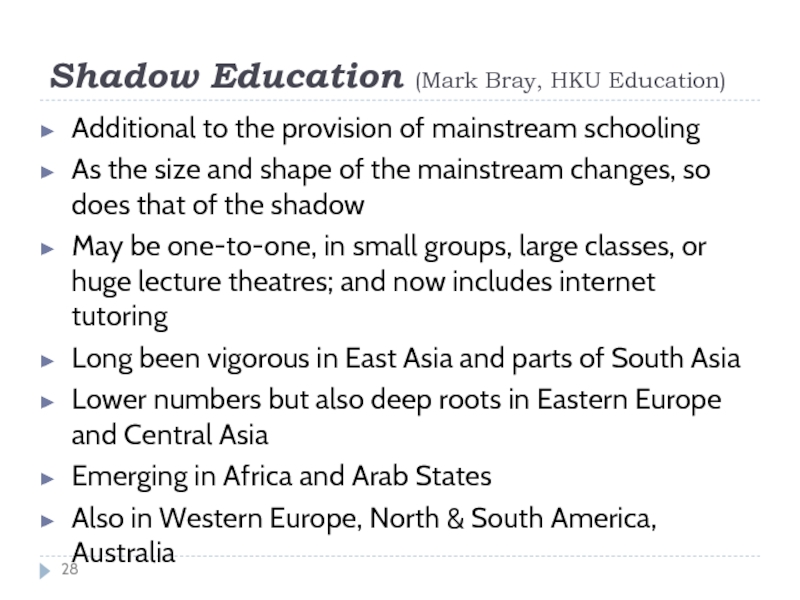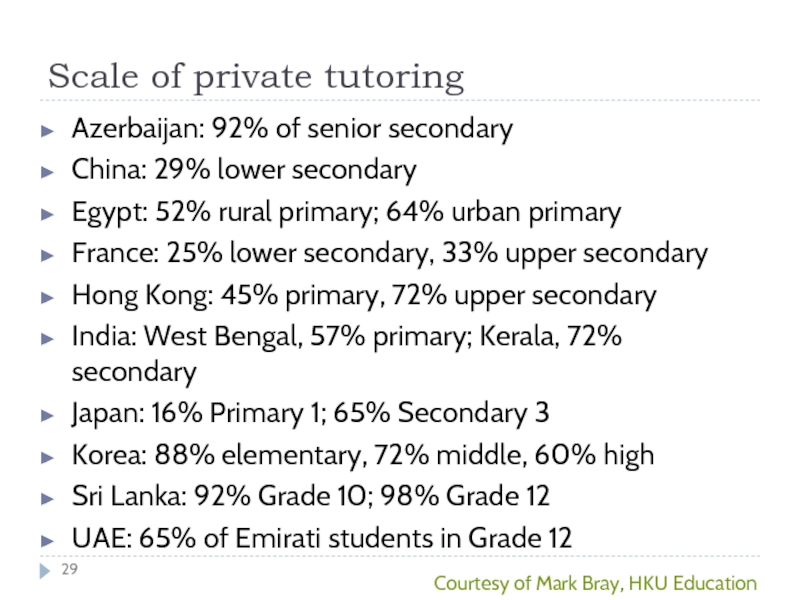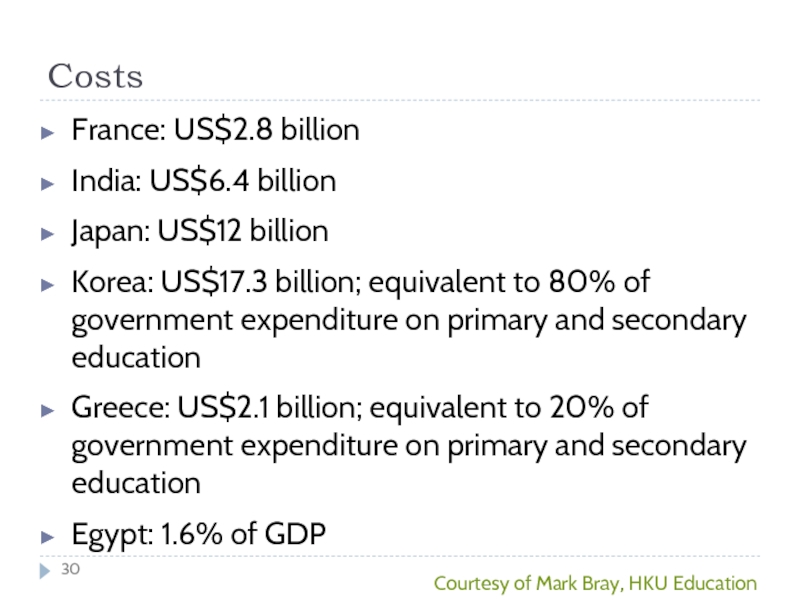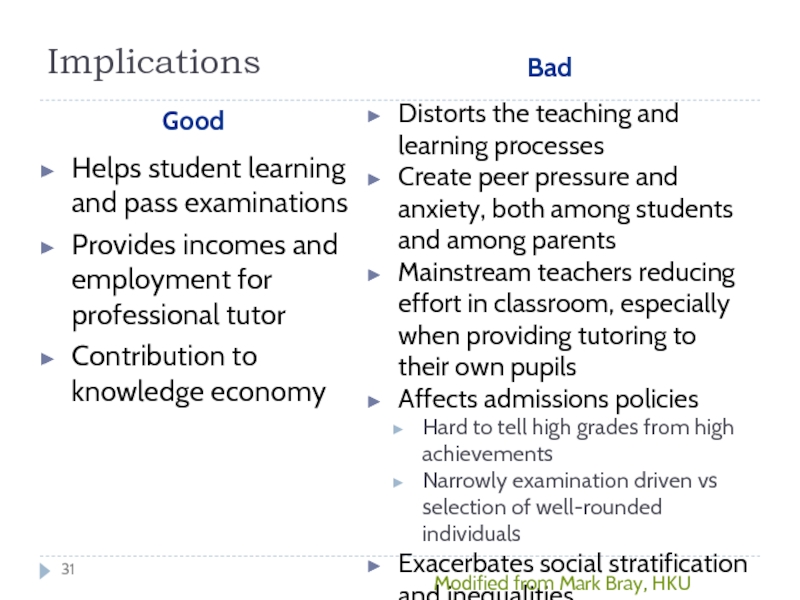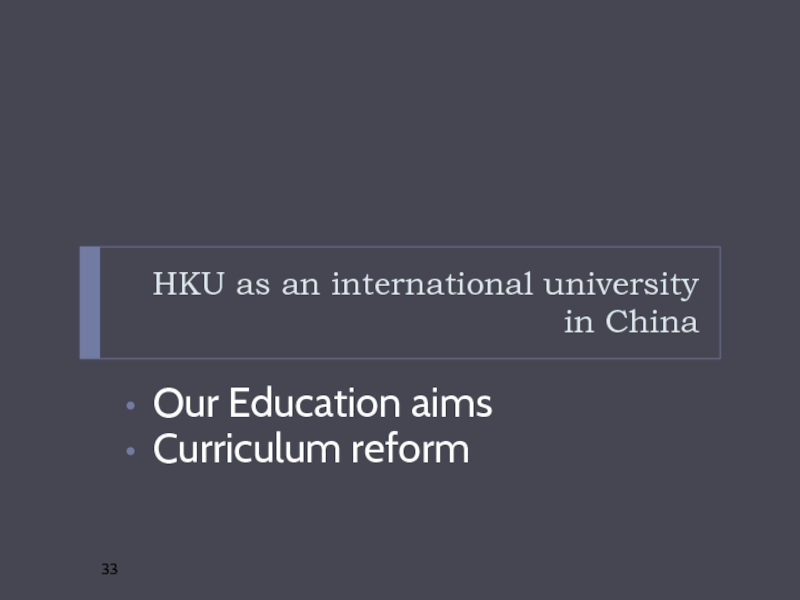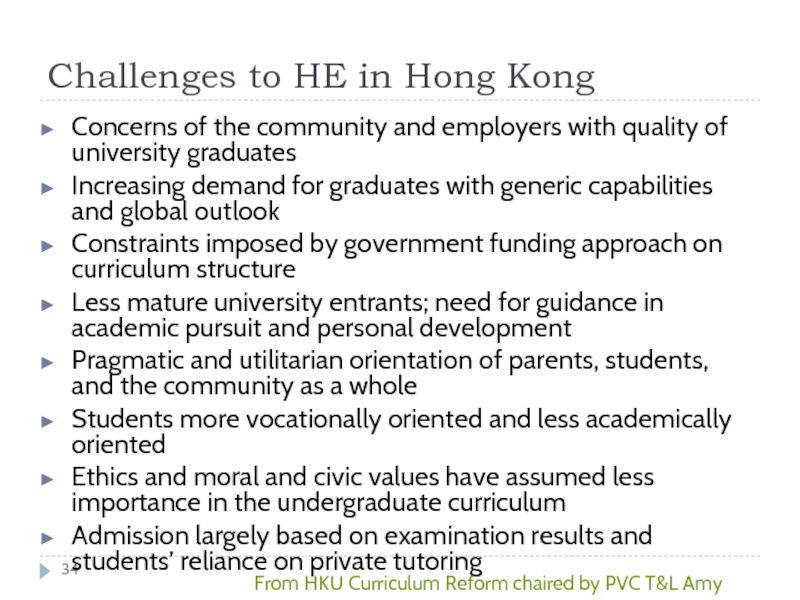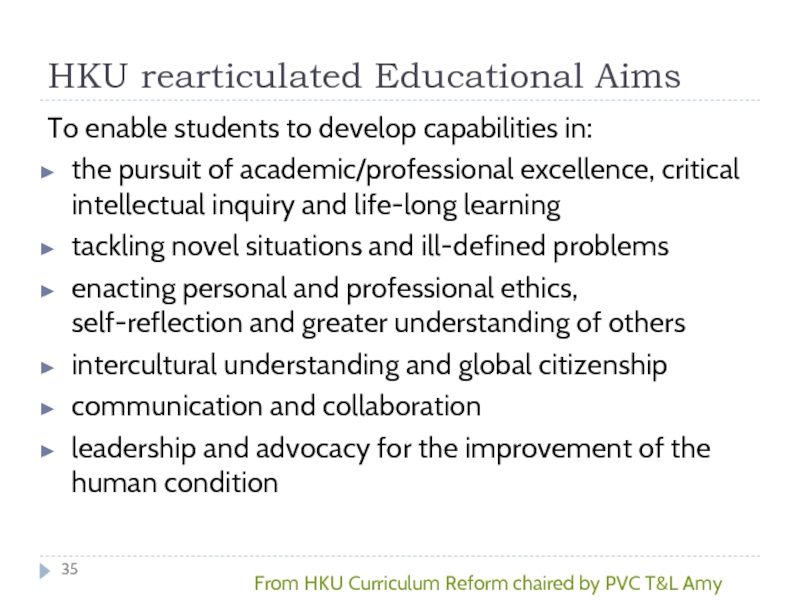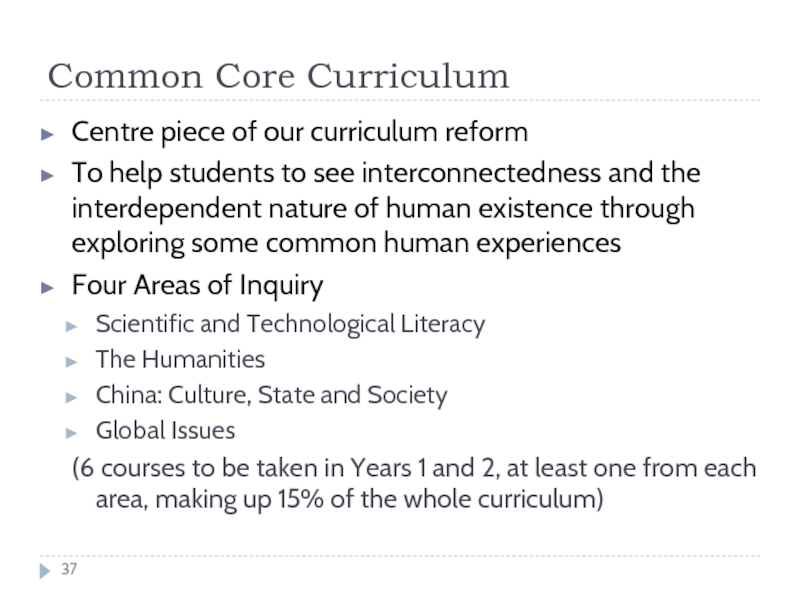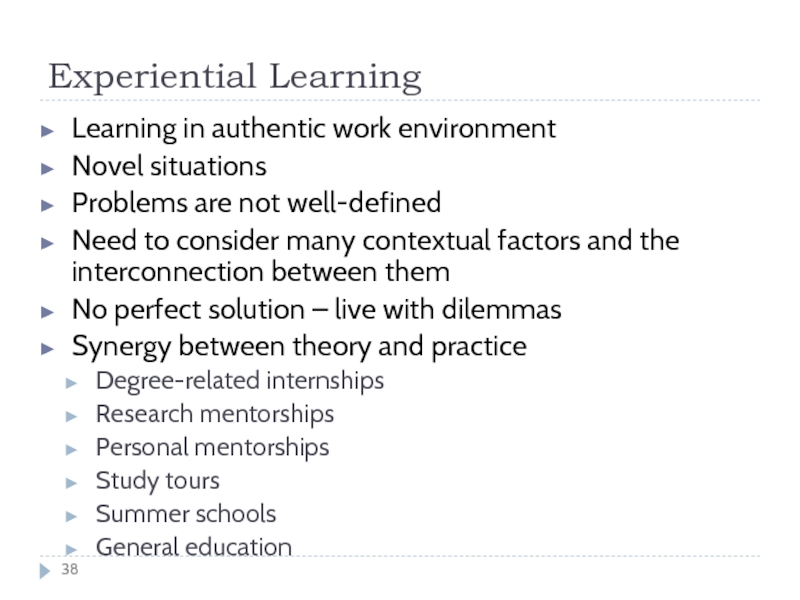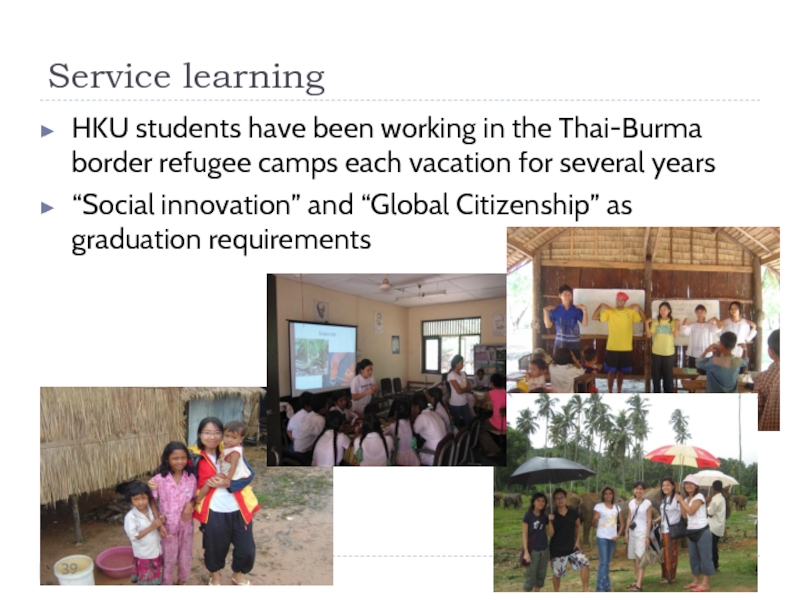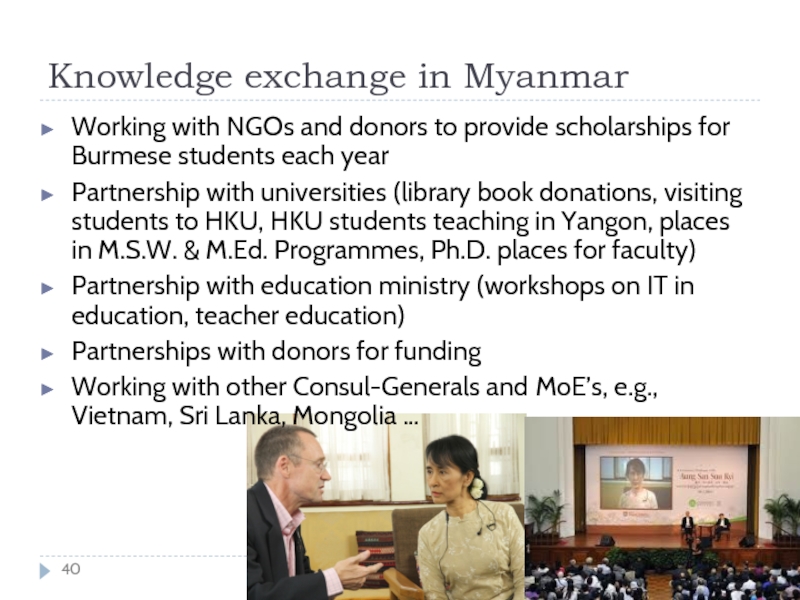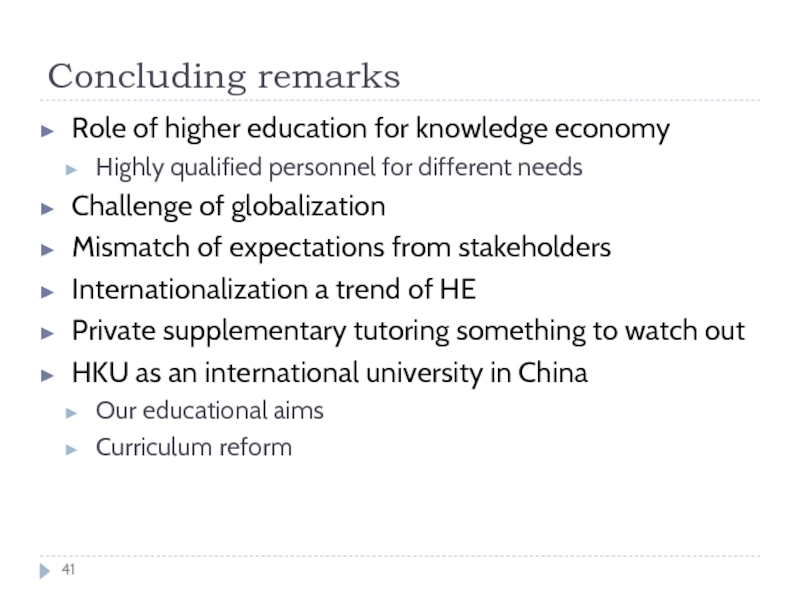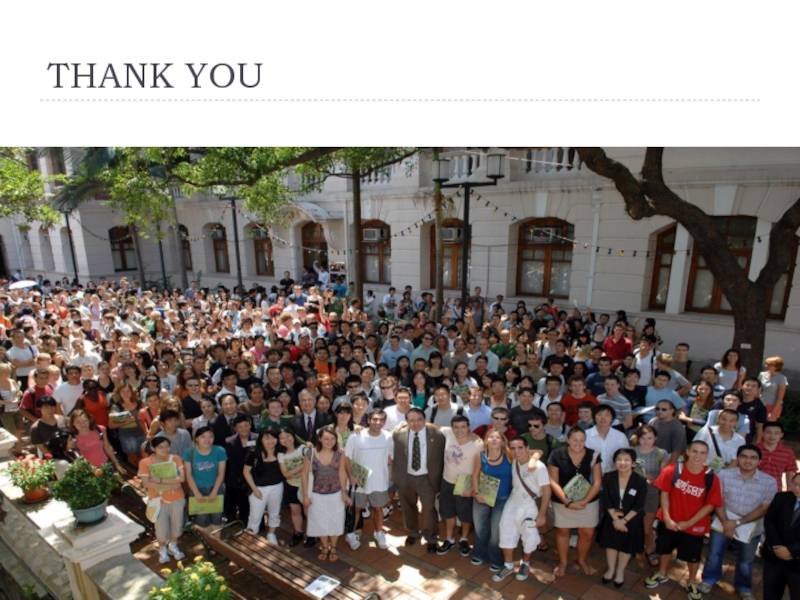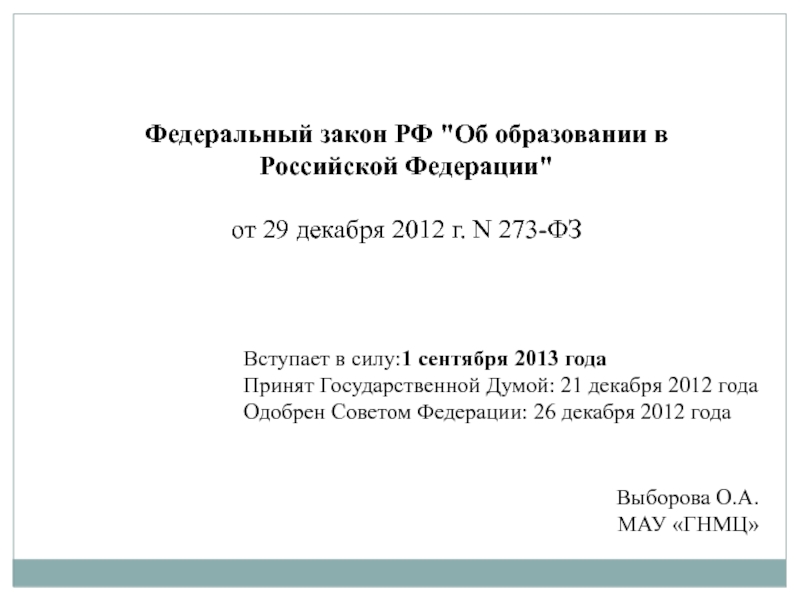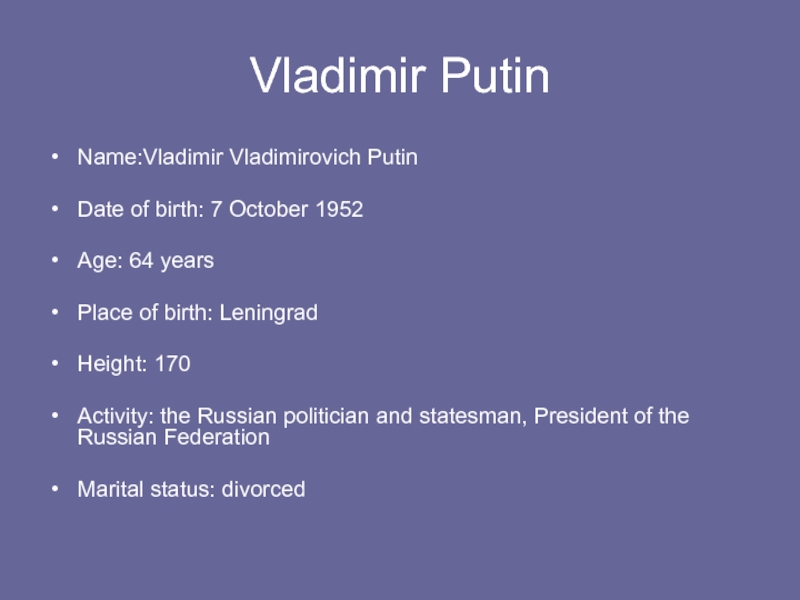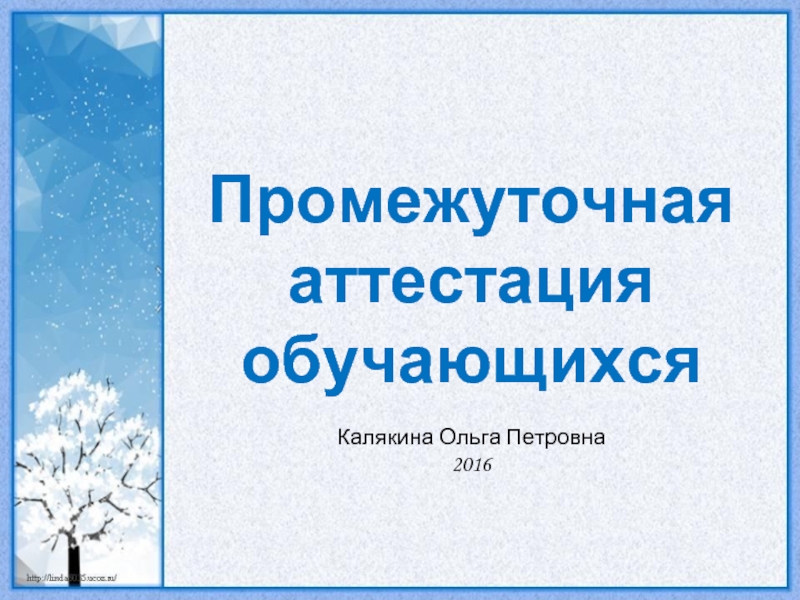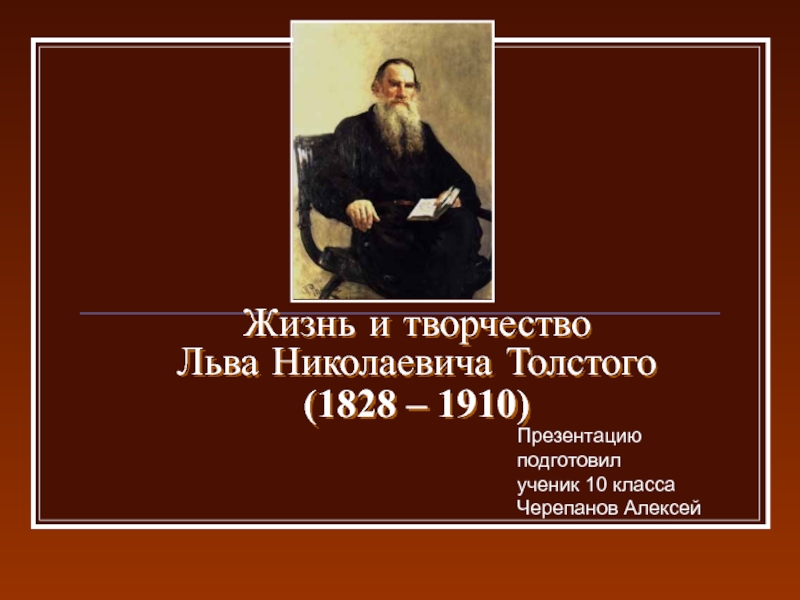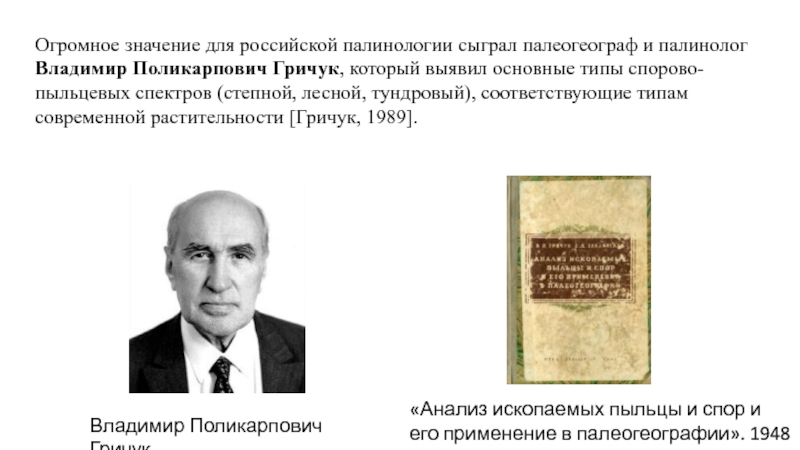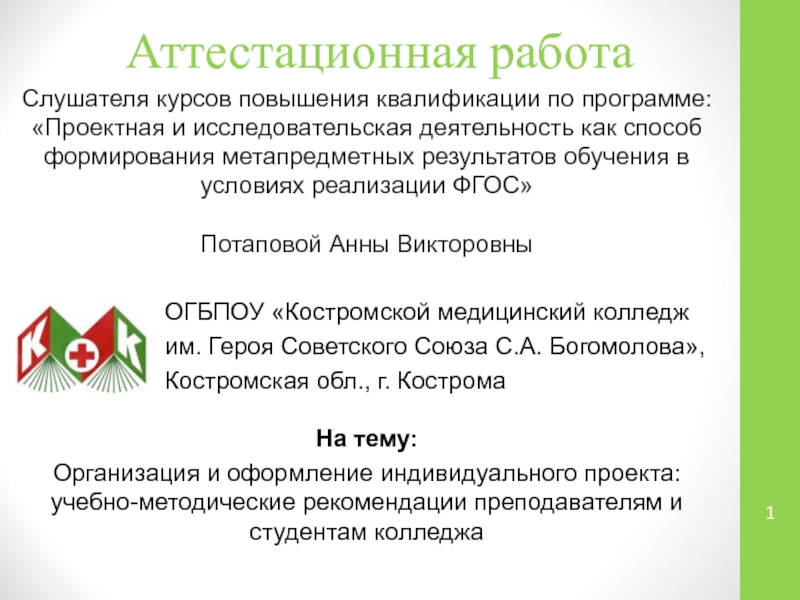- Главная
- Разное
- Дизайн
- Бизнес и предпринимательство
- Аналитика
- Образование
- Развлечения
- Красота и здоровье
- Финансы
- Государство
- Путешествия
- Спорт
- Недвижимость
- Армия
- Графика
- Культурология
- Еда и кулинария
- Лингвистика
- Английский язык
- Астрономия
- Алгебра
- Биология
- География
- Детские презентации
- Информатика
- История
- Литература
- Маркетинг
- Математика
- Медицина
- Менеджмент
- Музыка
- МХК
- Немецкий язык
- ОБЖ
- Обществознание
- Окружающий мир
- Педагогика
- Русский язык
- Технология
- Физика
- Философия
- Химия
- Шаблоны, картинки для презентаций
- Экология
- Экономика
- Юриспруденция
Higher Education for the Knowledge Economy презентация
Содержание
- 1. Higher Education for the Knowledge Economy
- 2. Overview Brief description of HKU Highly qualified
- 3. HKU Founded in 1911 The HK College
- 4. A Brief Introduction 10 Faculties Architecture Arts
- 5. Highly qualified personnel for the knowledge economy
- 6. Role of higher education Development of talents
- 7. Pyramid of human talents Shape of the
- 8. Challenges for higher education worldwide Globalization Mismatch of expectations
- 9. Challenges of Globalization (1) Interconnectivity, intensity,
- 10. Challenges of Globalization (2) The global
- 11. The rise of rankings THE / QS
- 12. One size fits all? Stefan Collini, The
- 13. How do we define quality for universities?
- 14. What is expected of higher education? Research,
- 15. Ask the Employers … According to HKU’s
- 16. The goals of education
- 17. Trend of higher education worldwide Internationalization Impact of private supplementary tutoring
- 18. Internationalization Internationalization of universities Research collaboration Teaching
- 19. Source: New trends in international student mobility
- 20. By percentage of population (0.6%) Courtesy of John Spinks, HKU Sr Advisor to VC
- 21. Source: New trends in international student mobility.
- 22. Changes in student mobility Courtesy of John Spinks, HKU Sr Advisor to VC
- 23. International Student Mobility ASEAN COUNTRIES
- 24. International Student Mobility ASEAN COUNTRIES
- 25. International Student Mobility ASEAN COUNTRIES
- 26. External Obstacles to Internationalization (of student bodies)
- 27. Private supplementary tutoring Courtesy of Mark Bray, HKU Education
- 28. Shadow Education (Mark Bray, HKU Education) Additional
- 29. Scale of private tutoring Azerbaijan: 92% of
- 30. Costs France: US$2.8 billion India: US$6.4 billion
- 31. Implications Good Bad Helps student learning and
- 32. It is coming your way Courtesy of Mark Bray, HKU Education
- 33. HKU as an international university in China Our Education aims Curriculum reform
- 34. Challenges to HE in Hong Kong Concerns
- 35. HKU rearticulated Educational Aims To enable students
- 36. Seven Distinctive Features of the New
- 37. Common Core Curriculum Centre piece of our
- 38. Experiential Learning Learning in authentic work
- 39. . Service learning HKU students
- 40. Knowledge exchange in Myanmar Working with NGOs
- 41. Concluding remarks Role of higher education for
- 42. THANK YOU
Слайд 1Higher Education for the
Knowledge Economy
Prof Lap-Chee Tsui, Vice-Chancellor and President,
OECD – IMHE General Conference
17 September 2012
Слайд 2Overview
Brief description of HKU
Highly qualified personnel for knowledge economy
Role of higher
Developed vs developing countries
Challenges for HE
Globalization
Mismatch of expectations
Trend of HE
Internationalization
Private supplementary tutoring
HKU as an international university in China
Our educational aims
Curriculum reform
Слайд 3HKU
Founded in 1911
The HK College of Medicine (established 1887)
One of the
Слайд 4A Brief Introduction
10 Faculties
Architecture
Arts
Business & Economics
Dentistry, Education
Engineering
Law
Medicine
Science
Social Sciences
15,000 undergraduates (from ~50
12,000 postgraduates (Research PG, Taught PG)
HKU School of Professional and Continuing Education (SPACE, including Community College)
Слайд 5Highly qualified personnel for the knowledge economy
Role of higher education
Developed
Слайд 6Role of higher education
Development of talents and leaders
High quality students
Range of
Employability
Advancement of scholarship
Research and discovery
Academic excellence
Knowledge sharing
Active engagement in knowledge transfer/exchange + serving the community
Слайд 7Pyramid of human talents
Shape of the pyramid varies with needs of
Top level decision makers
Middle management
High-skilled labor, office workers, …
post-secondary education
Universities
Слайд 9Challenges of Globalization (1)
Interconnectivity, intensity, simultaneity, multi-dimensionality, accessibility and instantaneity,
The world is getting smaller, but the scale and complexity of issues and problems are getting bigger
New forms of activity are learnt as they are being created
Confronted with more and more novel situations and ill-defined problems
Fewer moral certainties and more moral dilemmas
From HKU Curriculum Reform chaired by PVC T&L Amy Tsui
Слайд 10Challenges of Globalization (2)
The global environment
Massification of higher learning and
Globalization and greater demands for programs with a strong international component and for graduates with intercultural skills
Financial crises
University rankings …
Слайд 11The rise of rankings
THE / QS / Shanghai Jiaotong
Different league tables
But, changing methodologies / criteria / weighing / goalposts
‘Itemisation’ of parts of the ranking
Impacts on institutions
Good – recruitment, funding, donation, …
Bad – ill-informed decisions, vicious competition, …
Nonetheless, rankings boast huge ‘market’, which is here to stay
One size fits all?
Modified from Michelle Li, HK SAR EDB
Слайд 12One size fits all?
Stefan Collini, The Guardian, UK wrote in The
… Universities are said to serve two purposes – and two purposes only. The first is to
"equip" "young people" to get jobs in "the fast-moving economy of tomorrow”,
and the other is to
contribute to "growth", to develop the "cutting-edge products" needed in "today's competitive global marketplace" (and preferably to discover the odd miracle drug, too) …
Слайд 13How do we define quality for universities?
Quality = Large, comprehensive and
Small colleges → large comprehensive universities
Vocational / technical / teaching universities → research universities
Three types of HEI according to pursuit and objectives
(Chen Yu-kun on undergraduate teaching evaluation in China, 2008)
(1) Top universities (to become world class universities)
Quality = “pursuit of excellence”
“Pursuit” = to be ranked as top 100 in the world”
(2) Vocational & technical colleges and universities
Quality = “client satisfaction” = high employment rates.
“Being trusted by employing sectors means high quality”
(3) Colleges & universities between (1) & (2) – majority
“Quality means the extent to which their objectives are fulfilled”
Courtesy of Amy Tsui, HKU PVC T&L
Слайд 14What is expected of higher education?
Research, education and service to community
Different
Tax payers
Governments
Parents
Students
Employers
However, there is increasing emphasis on the importance of whole person education
Слайд 15Ask the Employers …
According to HKU’s employer survey on about 40
Слайд 17Trend of higher education worldwide
Internationalization
Impact of private supplementary tutoring
Слайд 18Internationalization
Internationalization of universities
Research collaboration
Teaching and learning
International student body
Enrich learning environment; cultural
Students going abroad
Learning experience; global perspectives; cultural understanding
Curriculum
Staff and student exchanges
Knowledge Exchange
Cooperation with other universities to advance human knowledge and higher learning
Global socioeconomic development would be the ultimate gain for human kind
Sharing of knowledge, information, good practice, …
Слайд 19Source: New trends in international student mobility . Hendrik van der
Courtesy of John Spinks, HKU Sr Advisor to VC
Слайд 21Source: New trends in international student mobility. Hendrik van der Pol,
Courtesy of John Spinks, HKU Sr Advisor to VC
Слайд 23
International Student Mobility
ASEAN
COUNTRIES
Japan
China
Korea
EAST ASIA
USA Germany
Canada
UK
Australia
New Zealand
Adapted from: International Student Mobility and Asian Higher Education Framework for Global Network
Miki SUGIMURA, Ph.D. Department of Education, Faculty of Humanities, Sophia University, Japan
The traditional educational destinations, USA, UK etc.
Malaysia
Subcontinent
Courtesy of John Spinks, HKU Sr Advisor to VC
Слайд 24
International Student Mobility
ASEAN
COUNTRIES
Japan
China
Korea
EAST ASIA
USA Germany
Canada
UK
Australia
New Zealand
Adapted from: International Student Mobility and Asian Higher Education Framework for Global Network
Miki SUGIMURA, Ph.D. Department of Education, Faculty of Humanities, Sophia University, Japan
The new Global Regionalism (Don Olcott), EU
Malaysia
Europe (Bologna)
Subcontinent
Courtesy of John Spinks, HKU Sr Advisor to VC
Слайд 25
International Student Mobility
ASEAN
COUNTRIES
Japan
China
Korea
EAST ASIA
USA Germany
Canada
UK
Australia
New Zealand
Adapted from: International Student Mobility and Asian Higher Education Framework for Global Network
Miki SUGIMURA, Ph.D. Department of Education, Faculty of Humanities, Sophia University, Japan
The new Global Regionalism (Don Olcott), Asia
Malaysia
Europe (Bologna)
Malaysians → UK dropped from 18K (1997) to 11K (2006); → Egypt were 5.5K (2006)
Subcontinent
Courtesy of John Spinks, HKU Sr Advisor to VC
Слайд 26External Obstacles to Internationalization (of student bodies) - 2nd & 3rd
Source: Ross Hudson (2010). Internationalization of Higher Education the 3rd IAU Global Survey Report .
Recognition of qualification / programme
Sample size N=745
Wld
Language barrier
Visa restrictions on our students
AF
Recognition of qualification / programme
Recognition of qualification / programme
AP
Language barrier
Recognition of qualification / programme
EU
Language barrier
Recognition of qualification / programme
LAC
Language barrier
Visa restrictions on our students
ME
Recognition of qualification / programme
Visa restrictions on foreign students
NA
Internationalization not national priority
Courtesy of Amy Tsui, HKU PVC T&L
Слайд 28Shadow Education (Mark Bray, HKU Education)
Additional to the provision of mainstream
As the size and shape of the mainstream changes, so does that of the shadow
May be one-to-one, in small groups, large classes, or huge lecture theatres; and now includes internet tutoring
Long been vigorous in East Asia and parts of South Asia
Lower numbers but also deep roots in Eastern Europe and Central Asia
Emerging in Africa and Arab States
Also in Western Europe, North & South America, Australia
Слайд 29Scale of private tutoring
Azerbaijan: 92% of senior secondary
China: 29% lower secondary
Egypt:
France: 25% lower secondary, 33% upper secondary
Hong Kong: 45% primary, 72% upper secondary
India: West Bengal, 57% primary; Kerala, 72% secondary
Japan: 16% Primary 1; 65% Secondary 3
Korea: 88% elementary, 72% middle, 60% high
Sri Lanka: 92% Grade 10; 98% Grade 12
UAE: 65% of Emirati students in Grade 12
Courtesy of Mark Bray, HKU Education
Слайд 30Costs
France: US$2.8 billion
India: US$6.4 billion
Japan: US$12 billion
Korea: US$17.3 billion; equivalent to
Greece: US$2.1 billion; equivalent to 20% of government expenditure on primary and secondary education
Egypt: 1.6% of GDP
Courtesy of Mark Bray, HKU Education
Слайд 31Implications
Good
Bad
Helps student learning and pass examinations
Provides incomes and employment for professional
Contribution to knowledge economy
Distorts the teaching and learning processes
Create peer pressure and anxiety, both among students and among parents
Mainstream teachers reducing effort in classroom, especially when providing tutoring to their own pupils
Affects admissions policies
Hard to tell high grades from high achievements
Narrowly examination driven vs selection of well-rounded individuals
Exacerbates social stratification and inequalities
Modified from Mark Bray, HKU Education
Слайд 34Challenges to HE in Hong Kong
Concerns of the community and employers
Increasing demand for graduates with generic capabilities and global outlook
Constraints imposed by government funding approach on curriculum structure
Less mature university entrants; need for guidance in academic pursuit and personal development
Pragmatic and utilitarian orientation of parents, students, and the community as a whole
Students more vocationally oriented and less academically oriented
Ethics and moral and civic values have assumed less importance in the undergraduate curriculum
Admission largely based on examination results and students’ reliance on private tutoring
From HKU Curriculum Reform chaired by PVC T&L Amy Tsui
Слайд 35HKU rearticulated Educational Aims
To enable students to develop capabilities in:
the pursuit
tackling novel situations and ill-defined problems
enacting personal and professional ethics, self-reflection and greater understanding of others
intercultural understanding and global citizenship
communication and collaboration
leadership and advocacy for the improvement of the human condition
From HKU Curriculum Reform chaired by PVC T&L Amy Tsui
Слайд 36Seven Distinctive Features
of the New Curriculum
Flexible
Curriculum
structure
Development of moral and civic
Engagement with local and global communities
Inter-disciplinary enquiry and collaboration
Multiple modes of learning and assessment
Experiential learning
Inquiry in multiple contexts
Слайд 37Common Core Curriculum
Centre piece of our curriculum reform
To help students to
Four Areas of Inquiry
Scientific and Technological Literacy
The Humanities
China: Culture, State and Society
Global Issues
(6 courses to be taken in Years 1 and 2, at least one from each area, making up 15% of the whole curriculum)
Слайд 38Experiential Learning
Learning in authentic work environment
Novel situations
Problems are not well-defined
Need
No perfect solution – live with dilemmas
Synergy between theory and practice
Degree-related internships
Research mentorships
Personal mentorships
Study tours
Summer schools
General education
Слайд 39
.
Service learning
HKU students have been working in the Thai-Burma border refugee
“Social innovation” and “Global Citizenship” as graduation requirements
Слайд 40Knowledge exchange in Myanmar
Working with NGOs and donors to provide scholarships
Partnership with universities (library book donations, visiting students to HKU, HKU students teaching in Yangon, places in M.S.W. & M.Ed. Programmes, Ph.D. places for faculty)
Partnership with education ministry (workshops on IT in education, teacher education)
Partnerships with donors for funding
Working with other Consul-Generals and MoE’s, e.g., Vietnam, Sri Lanka, Mongolia …
Слайд 41Concluding remarks
Role of higher education for knowledge economy
Highly qualified personnel for
Challenge of globalization
Mismatch of expectations from stakeholders
Internationalization a trend of HE
Private supplementary tutoring something to watch out
HKU as an international university in China
Our educational aims
Curriculum reform
